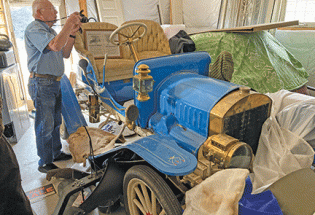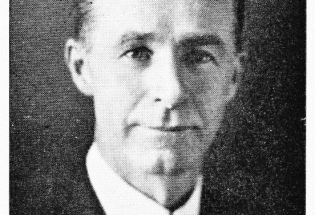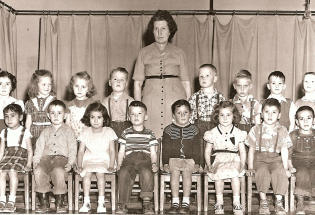Berthoudites soothed their rheumatism at Excelsior Springs
By Mark French
The Surveyor
It wasn’t the mineral waters at Glenwood Springs, Colorado, that ailing Berthoudites sought in the early 1900s; it was the healing springs at Excelsior Springs, Missouri. In 1907 Berthoud’s Harrison K. Hankins, O.J. Smith, and F.M. Waggener each traveled by train to Excelsior Springs, Missouri, for a soak to benefit their health. “Uncle Dick” Hubbell, a former Berthoud sheep-feeder and general store owner was also seen there by Hankins who reported Hubbell’s sighting to the Berthoud Bulletin.
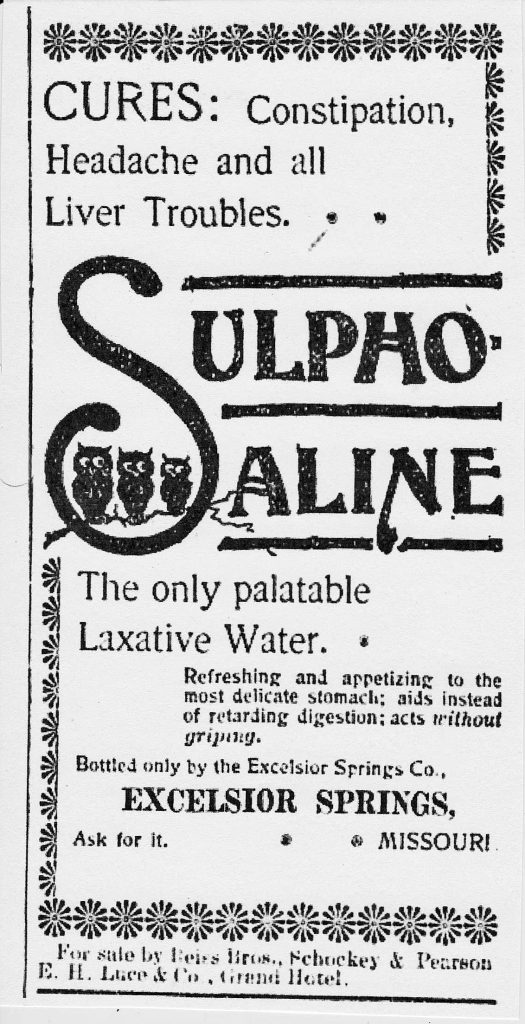
Sulpho-Saline Laxative Water was bottled by the Excelsior Springs Company and marketed to cure constipation, headache and all liver troubles. Advertisement from Colorado Daily Chieftain, June 22, 1893
Upon Hankins’ arrival back in Berthoud in May 1907 the local newspaper reported that he “returned Tuesday from Excelsior Springs, Missouri, where he had been for a couple of weeks drinking the healthful waters and eating Missouri food. He gained eleven pounds in weight while there, and came home feeling fine. Uncle Dick Hubbell is also at the springs, and is receiving benefit, as so Mr. Hankins says.”
Hankins was a native of Indiana, but Smith, Waggener and Hubbell were natives of Missouri who were certainly aware of the 20 springs at that location that had a collection of medicinal mineral waters containing bicarbonates of iron and manganese. The spring water was used for bathing and bottled health tonics.
To reach Excelsior Springs from Berthoud it is likely that the men took a Colorado & Southern train to Cheyenne, Wyoming, where they switched to a Union Pacific train destined for Kansas City, Missouri. From Kansas City to Excelsior Springs they rode a train traveling the Chicago, Milwaukee & St. Paul Railroad.
It was said that Excelsior Springs was discovered in 1880 when a local farmer was told that spring water oozing from the banks of the Fishing River should be administered to his sick daughter. After there was a noticeable improvement in her health as well as the health of others, a community began to form around the spring.
The town’s first hotel was built in 1881 and by 1909—two years after the Berthoud men visited Excelsior Springs—there were 14 hotels and about 200 rooming and boarding houses in the community. The accommodations used by Hankins, Smith, Waggener, or Hubbell are not presently known. However, in an open letter to the Berthoud Bulletin in 1922 F.M. Waggener wrote, “We reached Excelsior Springs about 5:30 p.m. Here we stopped with the Dressler family, the hanging out place for most the Berthoudites.” Presumably the Dressler family operated one of Excelsior Springs’ hotels or rooming houses.
In the beginning ailing individuals traveled to Excelsior Springs to bathe in mineral water that soothed rheumatism. Others went there to partake of Sulpho-Saline Laxative Water which was advertised to cure constipation, headaches, and liver trouble.
By the 1920s national advertising claimed that Excelsior Springs was “one of America’s most famous resorts where you can spend a delightful vacation at small cost. Golf, tennis, and all outdoor sports. Come and rest and play for a few weeks, drink the health giving waters and go back to your home rested and strengthened in body, mind and spirit.”
In 1925 the McCleary Sanitarium at Excelsior Springs boasted that their “serum-like treatment” cured piles without surgery.
On Election Day 1948, President Harry S. Truman spent the night at the Elms Hotel in Excelsior Springs where he learned that he had won his re-election bid against Republican candidate Thomas E. Dewey. Today Excelsior Springs boasts a population of around 11,000 people, three historic districts, and several buildings listed on the National Register of Historic Places.
Berthoud residents eventually turned their attention to nearby playgrounds like the Big Thompson and Poudre canyons. Accounts of trips to Excelsior Springs, Missouri, were seldom found in the local newspapers after 1910.
- May, 26 2016
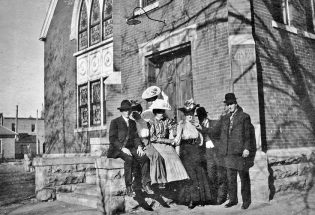
BHS graduation was held at UB Church ...
Mark French Tales of the Little Thompson Surveyor Columnist The Berthoud...
- July, 23 2015

Reservoir south of Berthoud named for...
Mark French Tales of the Little Thompson Native Missourian, John Carroll...
- February, 19 2021
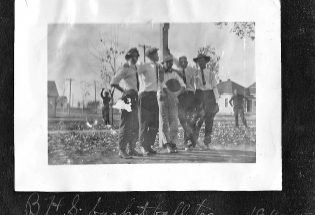
First BHS basketball played at local ...
Photo courtesy of the Turner Collection Berthoud Historic Society - This...
- October, 11 2019

F.I. Davis was Berthoud’s first...
By Mark French The Surveyor On Sept. 28, 2019, an event was held in Fickel...
- June, 04 2015
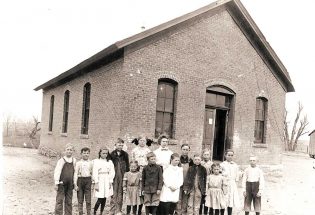
Dispute over site caused early school...
Old Berthoud School” located on the Little Thompson river bottom was...
- August, 24 2017

Community’s eclipse party tradi...
By Mark French The Surveyor Berthoud's first "eclipse party" took place...
- Asher Architects builds projects from...

- More than a market, a family legacy
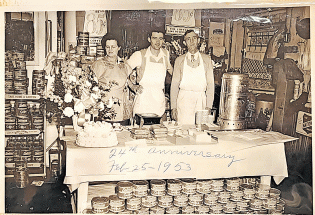
- Colorado business confidence is impro...

- Roy Tripi to become principal of BHS ...

- Teachers express concern about studen...

- Thompson School District faces criti...

- Community Calendar & Legal Notice...

- Community Calendar & Legal Notice...

- Community Calendar & Legal Notice...


POLICEBLOTTER
Community News
Northern Water sets C-BT quota at 70% for 2024
Community News

Emotions run high during Revere Property hearing
Community News
Snowpack at 119% above normal
Community News

Karspeck to serve third term as Berthoud mayor
Community News

OPINION – No bitchin’ allowed
Community News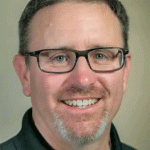
Roy Tripi to become principal of BHS on July 1
Community News
COMMUNITY CALENDAR:
Community Calendar – add an event
Homestead Fine Art Gallery First Fridays OPEN HOUSE
03 May 4:00 PM - 7:00 PM
Homestead Fine Art Gallery First Fridays OPEN HOUSE
07 Jun 4:00 PM - 7:00 PM
Homestead Fine Art Gallery First Fridays OPEN HOUSE
05 Jul 4:00 PM - 7:00 PM
Homestead Fine Art Gallery First Fridays OPEN HOUSE
02 Aug 4:00 PM - 7:00 PM
Homestead Fine Art Gallery First Fridays OPEN HOUSE
06 Sep 4:00 PM - 7:00 PM
Homestead Fine Art Gallery First Fridays OPEN HOUSE
04 Oct 4:00 PM - 7:00 PM








